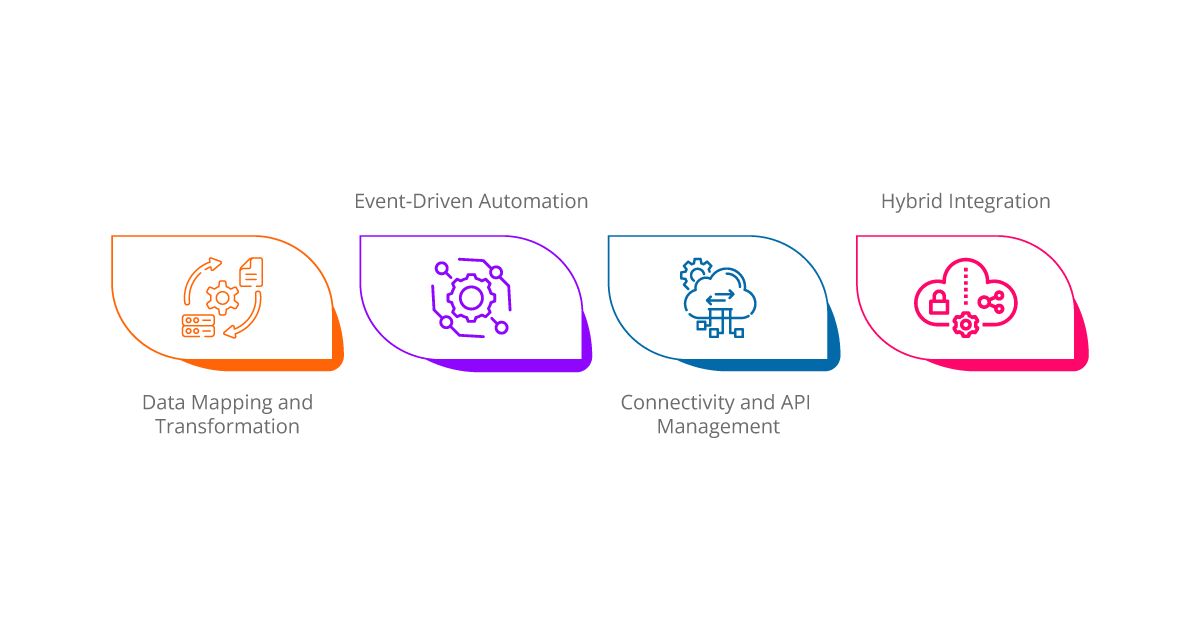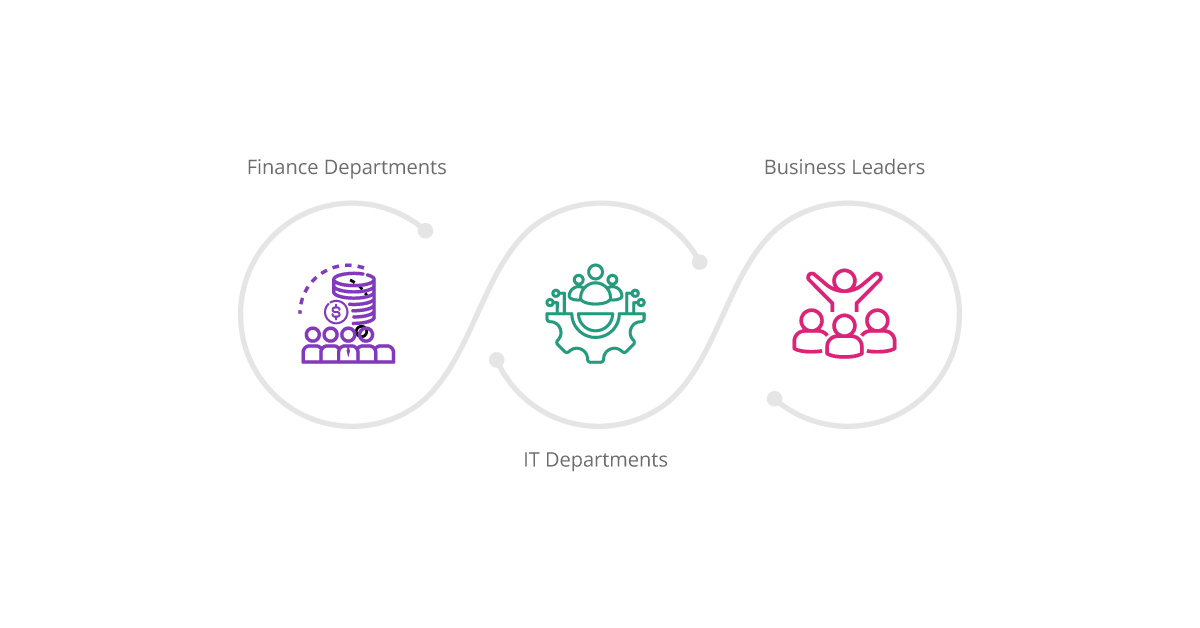Maximizing financial capacity is a perennial goal for businesses, irrespective of their size. As the digital landscape evolves, so do the methods to achieve this efficiency. One such solution gaining prominence is iPaaS integration, a powerful tool that streamlines financial processes and enhances operational agility. In this comprehensive guide, we’ll delve into the technical nuances of iPaaS integration for finance capacity optimization, exploring its benefits and applications across various sectors.
Aonflow iPaaS – Free for First 3 Months!
Build and run up to 1,500 transactions monthly with no cost. No payment info needed!
Understanding iPaaS Integration
At its core, iPaaS (Integration Platform as a Service) represents a transformative approach to modernizing how businesses handle their data and workflows. Imagine it as the conductor of a symphony, orchestrating a harmonious collaboration between diverse applications and systems within an organization’s digital ecosystem.
In simpler terms, iPaaS is a cloud-based solution that acts as a virtual bridge, connecting islands of data scattered across various platforms and departments. It’s like having a common language that allows different software programs to communicate seamlessly with each other. Whether it’s the finance department’s accounting software, the sales team’s CRM (Customer Relationship Management) tool, or the HR system managing employee data, iPaaS brings them all together under one roof.
Think of iPaaS as the glue that binds these disparate systems, enabling them to work together effortlessly. Instead of data being siloed in separate applications, iPaaS facilitates a fluid exchange of information in real time. This means that when a customer places an order, for instance, the sales system automatically updates inventory levels, triggers an invoice in the accounting software, and notifies the shipping department—all without manual intervention.
But iPaaS is more than just a data connector; it’s a catalyst for automation. By streamlining workflows and eliminating manual tasks, iPaaS empowers organizations to operate more efficiently and adapt to changing business needs with agility. Tasks that once required hours of manual labor can now be automated, freeing up valuable time and resources for strategic initiatives.
Moreover, iPaaS operates on the cloud, which means it offers scalability and flexibility that traditional on-premises solutions can’t match. Whether a business is a small startup or a multinational corporation, iPaaS can scale to accommodate growing data volumes and evolving integration requirements.
In essence, iPaaS is the linchpin of digital transformation, enabling organizations to unlock the full potential of their data and systems. It’s not just about connecting applications; it’s about unleashing innovation, driving efficiency, and staying ahead in today’s fast-paced digital economy.
The Technical Landscape of iPaaS Integration
Data Mapping and Transformation:
In the intricate web of digital data, iPaaS platforms serve as skilled cartographers, meticulously mapping the terrain of disparate data sources and guiding organizations through the integration journey. These platforms boast robust data mapping capabilities, empowering organizations to chart the course of data flow with precision and purpose.
Through sophisticated transformation functionalities, iPaaS platforms ensure that data traverses this landscape seamlessly, transcending barriers of format and structure. Think of it as a translator fluent in the languages of different data sources, harmonizing them into a common dialect for universal understanding.
Data enrichment, cleansing, and normalization are the tools in iPaaS’s arsenal, refining raw data into a polished gem of accuracy and relevance. Like a master sculptor, iPaaS shapes data into its optimal form, ready to be sculpted into insights and actions.
Connectivity and API Management:
At the heart of iPaaS integration lies connectivity—the lifeline that binds disparate systems into a cohesive ecosystem. iPaaS solutions offer a rich array of connectors and APIs, acting as the digital bridges that span the chasms between enterprise applications, databases, and cloud services.
These connectors and APIs serve as the conduits of integration, facilitating seamless communication and data exchange between diverse platforms. Whether it’s syncing customer information between a CRM system and an email marketing tool or integrating financial data across accounting software and analytics platforms, iPaaS bridges the gaps with finesse.
API management features further enhance the orchestration of this digital symphony, providing organizations with the tools to govern and monitor API usage with precision. Like vigilant gatekeepers, these features ensure the security, scalability, and compliance of integration processes, safeguarding the integrity of data exchanges and upholding industry standards.
Event-Driven Automation:
In the dynamic realm of digital operations, iPaaS platforms harness the power of event-driven architecture to choreograph workflows with elegance and efficiency. Imagine a conductor leading an orchestra, guiding each instrument to play its part precisely at the right moment.
Predefined triggers and events serve as the baton, signaling the commencement of automated workflows in response to specific stimuli. Whether it’s a customer placing an order, a product reaching a certain inventory threshold, or a payment transaction being processed, iPaaS platforms spring into action with agility and precision.
This event-driven automation ensures that processes unfold in real time, eliminating delays and reducing the need for manual intervention. Like clockwork, data synchronizes seamlessly across systems, and processes unfold with the fluidity of a well-rehearsed performance.
Hybrid Integration:
In an era marked by the coexistence of on-premises systems and cloud-based services, iPaaS solutions offer a bridge between worlds, enabling seamless integration in hybrid IT environments. These platforms blur the boundaries between physical infrastructure and virtual cloud environments, facilitating the frictionless exchange of data and processes.
Whether it’s integrating legacy systems with modern cloud applications or bridging the gap between disparate cloud services, iPaaS solutions offer the flexibility and agility needed to navigate the complexities of hybrid integration. Organizations can leverage existing infrastructure while embracing the scalability and innovation of cloud platforms, striking a harmonious balance between tradition and transformation.
Aonflow is the leading integration platform.
You can kick-start by integrating your first-ever workflow in just a matter of minutes.
Benefits of iPaaS Integration for Finance Capacity Optimization
Enhanced Data Visibility and Accuracy:
In the labyrinth of financial data, iPaaS integration acts as a guiding light, illuminating the path to clarity and insight. By centralizing financial data from disparate sources, iPaaS provides stakeholders with a panoramic view of financial performance and transactions. No longer confined to isolated silos, data becomes a cohesive narrative, enabling stakeholders to discern patterns, trends, and anomalies with ease.
Real-time data synchronization is the heartbeat of iPaaS integration, ensuring that decision-makers are not merely spectators but active participants in the unfolding narrative of finance. With data updated in real-time, decision-makers gain access to a treasure trove of accurate and up-to-date information. Armed with this knowledge, they can confidently navigate the financial landscape, making informed decisions and mitigating risks effectively.
Streamlined Financial Processes:
iPaaS integration is the silent conductor orchestrating a symphony of streamlined processes and seamless workflows. By automating repetitive tasks and workflows, iPaaS eliminates the inefficiencies inherent in manual intervention, freeing finance teams from the shackles of mundane tasks.
Tasks such as invoicing, reconciliation, and reporting, once labor-intensive and error-prone, are now executed with the precision of a well-oiled machine. With iPaaS at the helm, errors and delays become relics of the past, replaced by a culture of efficiency and excellence. This streamlining of processes not only enhances operational efficiency but also liberates resources, allowing finance teams to focus their energies on strategic initiatives that drive growth and innovation.
Improved Scalability and Agility:
In the ever-evolving landscape of business, adaptability is the key to survival, and iPaaS integration offers organizations the flexibility and agility needed to thrive in a dynamic environment. iPaaS platforms are inherently scalable and capable of expanding and contracting in response to changing business requirements.
Whether scaling to accommodate growing data volumes or integrating new applications and services, iPaaS platforms rise to the occasion with unparalleled agility. This agility enables organizations to onboard new applications, services, and business units quickly, facilitating growth and expansion without sacrificing operational efficiency.
Regulatory Compliance and Data Security:
In an era defined by heightened regulatory scrutiny and data breaches, compliance and security are non-negotiables in finance. iPaaS solutions offer a fortress of protection, equipped with robust security features and compliance controls to safeguard sensitive financial data.
Data encryption, access controls, and audit trails are the bulwarks of iPaaS security, ensuring that data remains shielded from prying eyes and unauthorized access. With iPaaS, organizations can rest assured that they are not merely compliant with regulatory requirements but fortified against the ever-present threat of data breaches and non-compliance penalties.
Who Benefits from iPaaS Integration?
Finance Departments:
Within the labyrinth of financial operations, iPaaS integration emerges as a beacon of efficiency, illuminating the path to streamlined processes and enhanced accuracy. Finance departments stand at the forefront of this transformation, reaping the rewards of iPaaS integration in myriad ways.
By automating laborious tasks such as data entry, reconciliation, and reporting, iPaaS liberates finance teams from the shackles of manual intervention, allowing them to redirect their energies toward higher-value activities. No longer burdened by the monotony of repetitive tasks, finance professionals can devote their time and expertise to strategic endeavors such as financial analysis and planning.
With iPaaS integration, data accuracy becomes more than just a goal; it becomes a reality. By centralizing financial data from disparate sources, iPaaS provides finance departments with a unified and comprehensive view of financial performance and transactions. Gone are the days of reconciling conflicting data sets or chasing down discrepancies—iPaaS ensures that data is accurate, consistent, and actionable, empowering finance professionals to make informed decisions with confidence.
IT Departments:
In the digital ecosystem, IT departments serve as the architects and guardians of technology infrastructure, tasked with navigating the complexities of integration and maintenance. For IT departments, iPaaS integration represents a paradigm shift, offering a lifeline in the form of centralized integration and streamlined workflows.
Complex integrations and disparate systems are no match for iPaaS platforms, which provide a centralized integration hub for managing and orchestrating integration workflows with ease. By abstracting away the intricacies of integration, iPaaS empowers IT teams to respond quickly to integration requests and changes, without being bogged down by the minutiae of coding and configuration.
Moreover, iPaaS integration alleviates the burden of managing legacy systems and disparate applications, allowing IT departments to focus their energies on strategic initiatives such as digital transformation and innovation. With iPaaS at their disposal, IT teams can drive efficiency, agility, and innovation across the organization, positioning themselves as catalysts for growth and success.
Business Leaders:
At the helm of every organization, business leaders navigate the complexities of strategy, innovation, and growth, relying on data-driven insights to inform their decisions. For business leaders, iPaaS integration is a powerful ally, offering real-time visibility into financial performance and operational metrics.
Gone are the days of making decisions in the dark—iPaaS integration illuminates the path forward, providing business leaders with a comprehensive and up-to-date view of key performance indicators, trends, and anomalies. Armed with this knowledge, business leaders can confidently make informed decisions, whether it’s optimizing resource allocation, identifying growth opportunities, or mitigating risks.
Moreover, iPaaS integration enables business leaders to stay ahead of the curve, facilitating strategic planning and innovation initiatives. By leveraging real-time data and insights, business leaders can anticipate market trends, capitalize on opportunities, and steer the organization toward sustainable growth and success. In essence, iPaaS integration empowers business leaders to chart a course toward a brighter and more prosperous future.
Conclusion
iPaaS integration holds immense potential for optimizing finance capacity and driving operational excellence. By leveraging the technical capabilities of iPaaS platforms, organizations can streamline financial processes, enhance data accuracy, and improve agility and scalability. As businesses continue to navigate an increasingly digital landscape, iPaaS integration emerges as a crucial enabler of financial efficiency and competitiveness.
Aonflow iPaaS – Free for First 3 Months!
Build and run up to 1,500 transactions monthly with no cost. No payment info needed!


